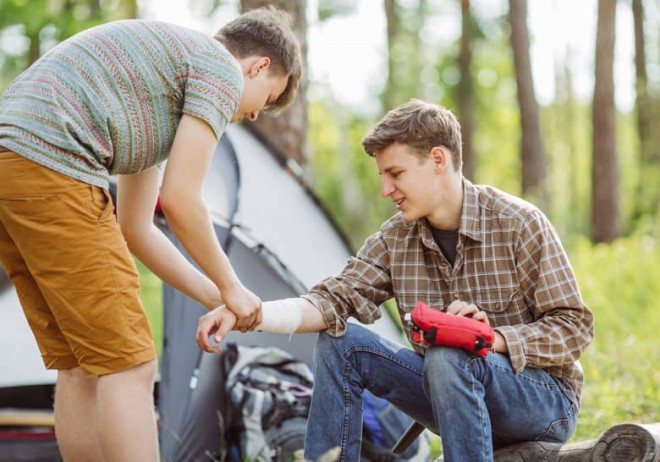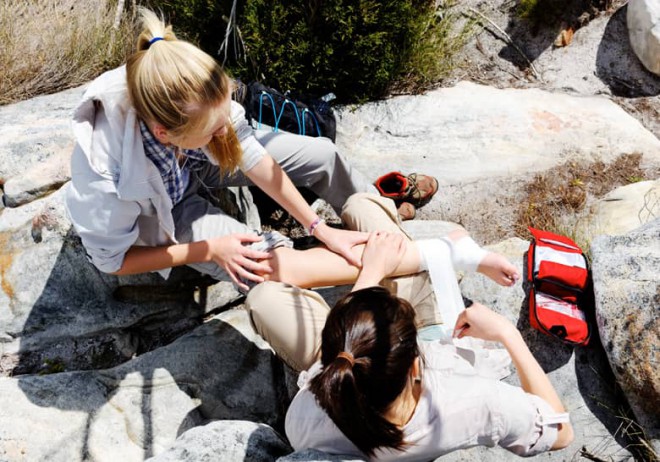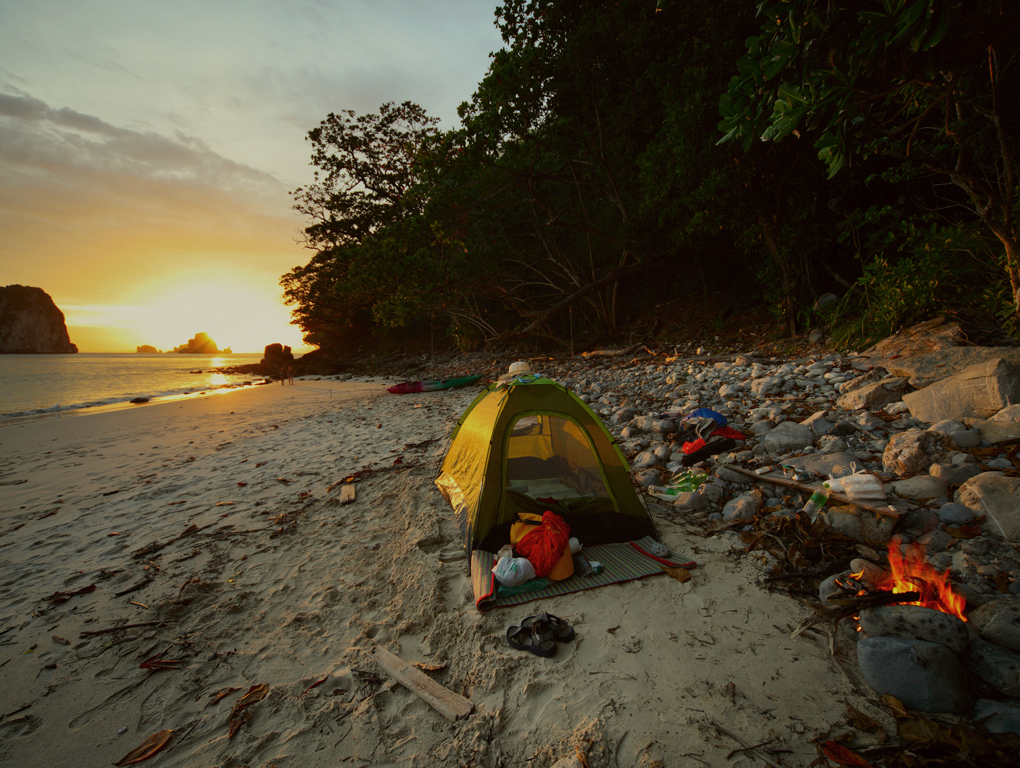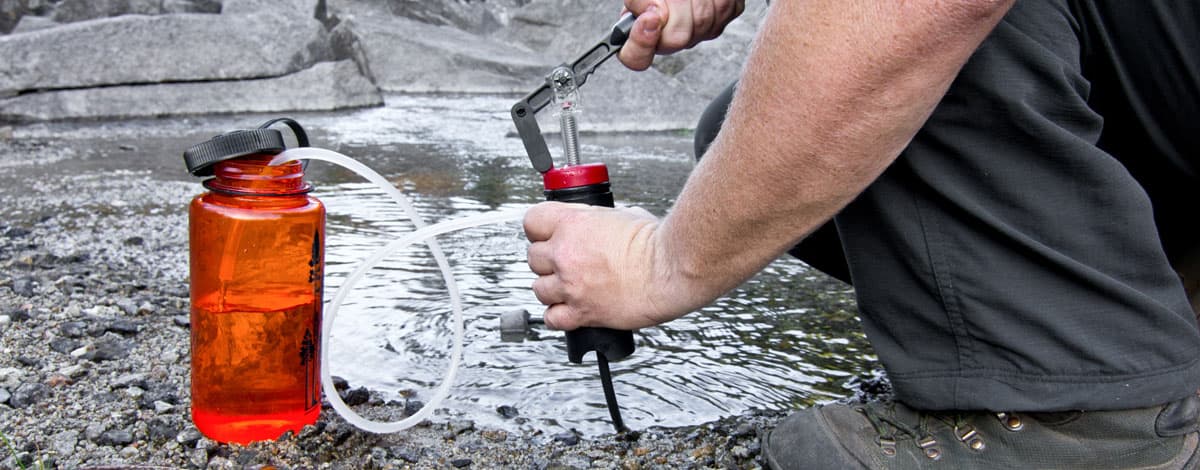1. Cuts and Scrapes
Treating a cut or scrape in the backcountry isn't much different than treatment at home. First, apply pressure to stop the bleeding. Next, clean the wound. If you don't have access to soap and water, use a first aid antiseptic wipe. Do not use water from lakes or streams as this increases the chance of infection; any water must be purified first. Lastly, dress and bandage the wound. Depending on the severity and size of the cut, you may need to use butterfly closures or tape to bandage the wound.

2. Head Injuries
A rock climber taking a fall, a rock tumbling from above or even a simple bump on the noggin while hiking can result in a head injury. Head injuries may produce blood (and lots of it) if there is a cut, but it's also possible a head injury doesn't bleed if there's no cut. Assume all head injuries also have a neck or spine injury until proven otherwise. Simple cuts on the scalp with no spine or neck injury can be treated with dressings and bandages; however, severe cuts and head, neck or spine trauma need to be addressed by emergency personnel immediately, as injuries can be life threatening.
3. Sprains and Strains
Tripping on the trail can result in a twisted ankle or sprained wrist. To treat this type of injury, check circulation, movement and sensation of the hand or foot. Next, use the RICE procedure to limit swelling. (RICE = rest, ice, compression, elevation). Wrap, tape or splint the injured joint to immobilize and provide pressure. After immobilized, elevate the hand or foot above the heart.

4. Hypothermia
Hypothermia happens when the body loses enough heat to cause the core temperature to drop, and cold weather, wetness and wind can all contribute to rapid loss of body heat. If someone is showing early signs of hypothermia (shivering, uncharacteristic behavior, cold, blueish-gray skin), warm them immediately. Remove any and all wet clothing and get them in dry, warm clothes; wrap the victim in a sleeping bag or blanket, give a warm water bottle to hold, feed them an energy gel or hot soup. Preventing hypothermia from progressing to severe hypothermia can be the difference between continuing the hike/trip or requiring emergency evacuation.
Being prepared and knowledgeable about how to administer the right first aid in an emergency can mean the difference between life and death in the backcountry. For explorers who want to learn more about basic first aid, look for a wilderness first aid class at your local outdoor club. NOLS also has great online resources.
Important: Neither the author of this article nor Sierra Trading Post staff have professional medical training and are not liable for any injuries or illnesses that may occur as the results of said injuries. The author is sharing her tips and advice learned from a wilderness first aid course and years of experience exploring the outdoors.




